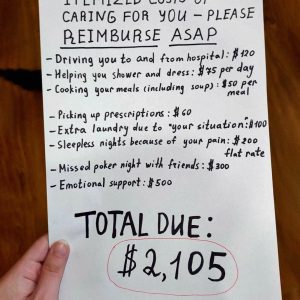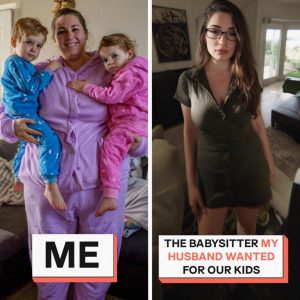Oral cancer—also called mouth cancer—can develop in many areas of the mouth, including the tongue, lips, gums, cheeks, and the floor or roof of the mouth. Early detection is crucial because it greatly improves treatment outcomes, yet the earliest symptoms are often so subtle that people overlook them until the condition has progressed. Many individuals assume minor mouth changes are harmless or temporary, delaying care while the disease quietly advances. This is why awareness, vigilance, and consistent dental checkups are essential lines of defense. Dentists can detect abnormalities long before they become visible or painful to patients, which is especially important given that the earliest signs of oral cancer typically present as small, painless, or easily dismissed changes. Understanding the early warning signs empowers people to notice shifts in their oral health that may otherwise go unnoticed.Several early symptoms should prompt immediate attention. Persistent sores—those that do not heal after two weeks—are among the most common early warning signs. Changes in tissue color also raise concern, particularly when they present as white patches (leukoplakia), red velvety areas (erythroplakia), or a mixture of both. These patches often cannot be wiped away and may indicate precancerous or cancerous changes. Unexplained bleeding in the mouth, especially without any identifiable injury, is another sign that something is wrong. Lumps, thickened tissue, or rough, raised patches on the gums, tongue, or inner cheek can also suggest abnormal growth, even when they are painless. Numbness, tingling, or persistent discomfort may point to nerve involvement, while difficulty chewing, swallowing, speaking, or moving the jaw could indicate that cancer is beginning to affect deeper structures. Finally, chronic bad breath (halitosis) that does not improve with regular hygiene might be tied to changes in tissue or lingering infection. In all these cases, professional evaluation is strongly recommended.Understanding the risk factors behind oral cancer helps clarify who should be especially vigilant about screenings and symptom monitoring. Tobacco use—whether smoked or chewed—remains the most significant risk factor, dramatically increasing the likelihood of developing cancerous cells in the mouth. Heavy alcohol consumption compounds that risk. HPV (human papillomavirus), particularly certain high-risk strains, has also become a notable contributor to oral and oropharyngeal cancers in recent years. Excessive sun exposure, particularly affecting the lower lip, can raise the risk of lip cancers. Age plays a role as well, with most cases occurring in individuals over 40, although younger patients are increasingly being diagnosed. Poor dietary patterns and inadequate nutrition can further affect the body’s ability to repair tissues and resist cellular changes. People with one or more of these factors benefit greatly from routine screenings and heightened self-awareness.Regular screenings—especially with dentists—are among the most effective tools for early detection. Dental professionals are specifically trained to recognize early abnormalities during routine visits, often identifying suspicious areas long before symptoms appear. The Mayo Clinic and other health authorities recommend dental checkups at least twice a year, not only for oral hygiene but also for cancer prevention. During these visits, a dentist can observe subtle changes in texture, color, or tissue integrity, and may use special lights or tools to evaluate suspicious lesions. These appointments offer an opportunity to catch early-stage cancer, when treatment is more effective, less invasive, and far more likely to succeed. For individuals with elevated risks such as tobacco use, alcohol use, or HPV exposure, these biannual exams become even more critical. Consistent follow-up allows professionals to track changes and intervene promptly if concerns arise.Medical attention should be sought if any concerning symptoms last longer than two weeks, including non-healing sores, lumps, discolored patches, persistent pain or numbness, unexplained bleeding, difficulty swallowing, chewing, speaking, or ongoing bad breath. While many of these signs can be caused by benign conditions, their persistence is what warrants evaluation. Oral cancer is among the most treatable cancers when caught early, but its subtle onset means that awareness and proactive care are essential. Ultimately, staying attentive to changes inside the mouth, adopting protective habits, reducing high-risk behaviors, and maintaining regular dental appointments provide the strongest defense. The message is simple yet powerful: early detection saves lives. By understanding and recognizing the earliest signs, individuals can take control of their oral health, ensuring that potential problems are identified and addressed long before they become dangerous.
Related Posts

After a recent surgery, I returned home exhausted and in pain, expecting rest and support. Instead, I found a note taped to the fridge: a detailed bill labeled “Expenses of Taking Care of You,” itemizing every task my husband had done. I was stunned. While I appreciated his help, the gesture felt controlling and absurd—a bill for love and care? At first, I considered confronting him angrily, but then I decided on a different approach. I taught him a lesson in return, using humor and creativity. Over the next few days, I compiled my own “invoice,” highlighting everything he had done wrong—or forgotten—while I had been recovering. I added exaggerated charges for things like “forgetting my pain meds” and “burning toast,” presenting it to him with a straight face. He laughed, then blushed, realizing how ridiculous his original note had been. The lesson landed: caring for a loved one isn’t a transaction, and gratitude is far more meaningful than a tally of chores. By turning the moment into playful accountability, we found humor in an otherwise tense situation, and it became a story we still laugh about—and remember—as a quirky reminder of marriage, care, and respect
For seven years, the narrator believed her marriage to Daniel was quiet, steady, and happy—filled with porch swings, morning coffee, and whispered dreams of someday having children….

After my husband passed away, I was overwhelmed by grief. I expected to inherit his estate and navigate the legal process with the assurance that our years together would be recognized. But during the paperwork and legal consultations, I was hit with a shocking revelation: we were never legally married. The realization left me reeling. All the plans, the joint accounts, the assumptions of legal protections—they were suddenly meaningless. I discovered that, for some reason, the marriage license had never been filed. Despite sharing a home, finances, and decades of life together, the law treated me as a stranger. The consequences were immediate and painful. I could not claim inheritance, access certain accounts, or make decisions regarding his estate. The reality of being completely unrecognized by the legal system intensified my grief, adding frustration and disbelief to the sorrow I was already experiencing. Friends and family offered emotional support, but the lesson was harsh: assumptions and paperwork are not the same as legal protection. In the midst of mourning, I had to navigate a complex legal maze, learning the importance of verifying documentation and understanding one’s rights, even in long-term relationships that feel secure.
Patricia, a 53‑year‑old woman who believed she understood heartbreak, found her world shattered when she received a devastating call informing her that her husband of 27 years,…

Coming home from my chemotherapy session, exhausted and vulnerable, I never expected the scene that awaited me. My husband, the man I had trusted and loved for years, was kissing another woman in our living room. Shock and heartbreak froze me in place. In a haze of disbelief, I confronted him, and instead of remorse, he lashed out, kicking me out of the house. The next 24 hours were a whirlwind of emotions. I wandered between friends’ homes, cried, and tried to make sense of the betrayal. I felt abandoned at my weakest moment, grappling with both the illness and the ultimate personal betrayal. Then, the phone rang. It was him. He was on his knees, voice trembling, begging me to come back. The realization that his actions had consequences hit him hard. While I could see his regret, the damage was real. That day taught me more than pain—it showed me my own strength and resilience. Surviving cancer had tested my body, but surviving betrayal tested my spirit. I realized that forgiveness and reconciliation, if ever possible, must come from careful reflection and not just desperate pleas.
Victoria, a woman battling cancer, returned home after a grueling chemotherapy session, expecting the support and care of her husband, Leo. After five years of marriage, she…

My husband has always had a cheeky sense of humor, often making jokes that toe the line between funny and absurd. One evening, over drinks and casual conversation, he joked that he wanted a “hot” babysitter for our kids. I laughed nervously, pretending to brush it off—but the idea lodged itself in my mind. The next day, I decided to turn his joke into a playful lesson. I arranged a scenario that would catch him completely off guard—without involving anyone else or crossing boundaries. I transformed our home, donning a bold outfit and persona, exaggerating every detail of his joke in a way only I could. When he arrived home and saw the setup, his jaw dropped. At first, he laughed, then realized he had underestimated the lengths I’d go to teach him a lesson about his flippant comment. I couldn’t stop laughing at his stunned expression—it was equal parts shock, amusement, and admiration. That night became one of our most memorable and hilarious moments together. What started as a careless joke ended with laughter, a playful reminder that sometimes, humor can be turned back on the joker in the most unexpected—and unforgettable—ways.
Anna, a 32-year-old stay-at-home mom from Illinois, felt invisible in her own home despite managing the full-time care of her three-year-old twins, Olivia and Max. While her…

In several regions, residents have reported alarming incidents occurring while using their toilets, sparking widespread concern and curiosity. The attacks, which at first seemed isolated, have now been reported across multiple towns, prompting local authorities to issue safety warnings. Victims describe startling encounters that happened suddenly, leaving them shaken and seeking answers. Authorities are investigating the situation to determine the cause, examining whether the incidents involve wildlife, environmental hazards, or another factor entirely. While some reports suggest the involvement of small animals or insects, others remain unexplained, adding to the fear and confusion. Local health and safety officials have urged people to remain vigilant, advising residents to check their surroundings carefully and to avoid using outdoor or less-secure facilities when possible. Communities are responding by sharing information, taking precautionary measures, and monitoring vulnerable locations. Social media has amplified the issue, with people posting warnings, experiences, and photos, helping raise awareness quickly. Though the phenomenon is unusual and frightening, experts emphasize the importance of staying calm, following official guidance, and avoiding panic. The investigation continues, as authorities work to understand the root cause and ensure the safety of all residents, reminding the public that even everyday routines can sometimes carry unexpected risks.
Though often thought of as a bizarre or humorous occurrence, snake bites in toilets are a very real and sometimes dangerous phenomenon in certain parts of the…

After my son died, my world crumbled. I expected grief, but I never expected to be kicked out of my own home by my daughter-in-law. Stripped of comfort and security, I found myself living in a local shelter, surrounded by strangers, enduring long, lonely nights and meager meals. Every day was a battle—not just with sorrow, but with the reality of having nowhere to belong. Amid the despair, I began reflecting on my son’s life, the quiet ways he had touched the world. One day, I learned a shocking secret he had kept even from his own mother. While I struggled to survive, he had been quietly helping others—donating to charities, leaving little notes of encouragement, and performing acts of kindness for strangers. Hearing this, I was stunned. Even in death, he taught me a lesson in resilience, empathy, and quiet generosity. My heartbreak slowly transformed into inspiration. I realized that, while I could not change the circumstances, I could honor his legacy by living with the same compassion he had shown. That revelation gave me the courage to rebuild my life, carry forward his spirit, and find hope even in the darkest moments.
Helen Harris, a 72-year-old woman, had always imagined her later years surrounded by family in the comfort of her home, not on a narrow cot in a…